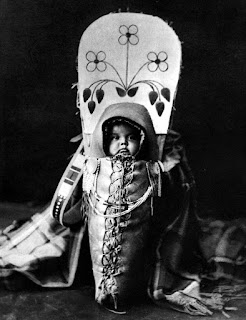The Navajo Indians live in the southwestern part of our country but this is not their original home. It is still doubtful when, how, and from what place the Navajos came to their present homeland. However, from documents of Navajo legends certain bits of information can be worked together to tell a part of the story.
An unknown number of years ago, possibly several thousand, the ancestors of the Navajos lived somewhere in northern Asia. Perhaps it was the search for better hunting grounds that led them across Bering Strait and into the New World. For many hundreds of years they lived as wandering hunters in northwestern Canada. Finally, a thousand or more years ago, they migrated southward and came to Arizona and New Mexico where the Pueblo Indians were living.
Until they reached the Southwest, the Navajos lived by hunting game and gathering wild seeds and fruits. They knew nothing of farming or the weaving of blankets. Gradually they learned from their Pueblo neighbors how to grow corn, beans, and squashes, and their life became more settled. Later, after the coming of the Spaniards, the Navajos began to herd sheep and to weave woolen blankets. Evidently the Pueblo Indians taught them many things, for Navajo legends are full of references to their powerful Pueblo neighbors.
The Navajos do not refer to themselves by the name "Navajo" but call themselves "Dineh, the People" or simply "The People." The origin of the name "Navajo" is uncertain. It is likely that the name is derived from the Tewa (Pueblo) word "Navahu," which means "large tracts of cultivated lands." The Navajos and their neighbors, the Apaches, belong to the family of tribes that speak the Dineh or Athabascan language and their nearest relatives today outside of the Southwest are the Indians of northwestern Canada.
 |
| Monument Valley - Panoramio. |
The present home of the Navajos is on a reservation area of about sixteen million acres in northeastern Arizona, northwestern New Mexico, and southern Utah. Several million acres near the Reservation also are used by the Navajos, who lease the land or own allotments. This Navajo land is mainly a high plateau region that has an elevation of from five thousand to eight thousand feet. It is a sandy, arid country covered with sage brush, small groups of juniper trees, and pinyon, with fir trees replacing the sage in the higher elevations.
It is a country of great variety and beauty. There are brightly colored mesas and deep canyons. There are deserts that are either brilliant with wild flowers or gray and bleak, according to the season. But it is a country where a living is hard to make. Farming is difficult where water is scarce and unpredictable, where soil is thin or worn out, and where fields are cut by canyons and unexpected torrents of rain water. In spite of all this, the Navajos have thrived and their numbers have tripled since the earliest days. The old, traditional ways that the Navajo have earned their living have been by farming, herding sheep, weaving blankets and rugs, and making silver jewelry. by Roberta Caldwell.
More About Traditional Navajo Artists for Young Readers:

















